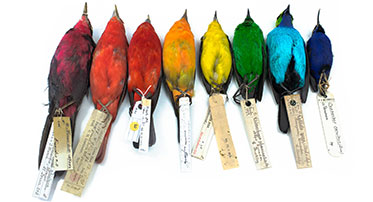
© Anna Olsson
At a glance
Count how many stars you can see at specific points of the night sky.
Type of activity: Outdoors, wherever you live.
Who can take part? Everyone
When? This project is now complete.
How long will it take? 10-15 minutes to assemble apparatus, 5 minutes to make observations and submit data.
This project is now complete
Many thanks for everyone who took part in this project. You can view a final report on the results on the ForskarFredag website.
Take part in a European-wide experiment to map the extent of light pollution affecting the night sky.
Why we are doing the project
Although we rely on artificial lighting to make us safer and more comfortable at night, light pollution can cause problems for both humans and other animals.
Not only can many of us no longer see the stars in the night-sky, but the light can play havoc with night-flying insects and the plants they pollinate, bats, and human circadian rhythms.
You can find out more by reading our article Is light pollution costing us more than just the night-time?
The Star-Spotting Experiment is a Swedish-led citizen science project (visit the Star-Spotting Experiment website for more information). By counting stars in the night sky, people can contribute data about the level of light pollution in their own neighbourhood.
How to take part
To take part, you will need to:
- Make a measuring device from simple equipment.
- Use the device to look at nine points in the night sky.
- Enter your results via a mobile app.
Full instructions can be downloaded here (PDF 1.05MB).
Equipment needed
- A paper tube, paper, scissors, tape, string and a weight (such as a nut) to make your measuring device.
- Download the Star-Spotting Experiment app. Either from the Google Play Store (for Android devices), or the App Store (for Apple iOS devices).
- A compass (you can use a compass app on your phone).
What to do
- Assemble your measuring device according to the instructions.
- Measure the length and diameter of the tube carefully.
- Make sure your phone has location services (GPS) on.
- Start the app on your phone.
- Go outside (at least an hour after the sun has gone down).
- Find the direction with a compass.
- Wait 10 minutes for your eyes to get used to the dark.
- Hold the tube at a 45-degree angle and align it in the eight directions + straight up (zenith). Count how many stars you can see through the tube and report the number in the app.
- Make sure that your observations are recorded in the right place on the map.
Instructional video
The Swedish project team have made a video to guide you through how to assemble your device, take measurements and submit your results. Please press 'CC' to turn on English subtitles.

© Lotta Tomasson/VA CC BY-NC 2.0

Download the app
You can submit your observations via the The Star-Spotting Experiment/Stjärnförsöket app.
Android: Download from the Google Play Store

Find out more
The Star-Spotting Experiment has been developed for European Researchers’ Night in Sweden 2019, coordinated by VA (Public & Science).
Find out more about the project on the ForskarFredag website.



